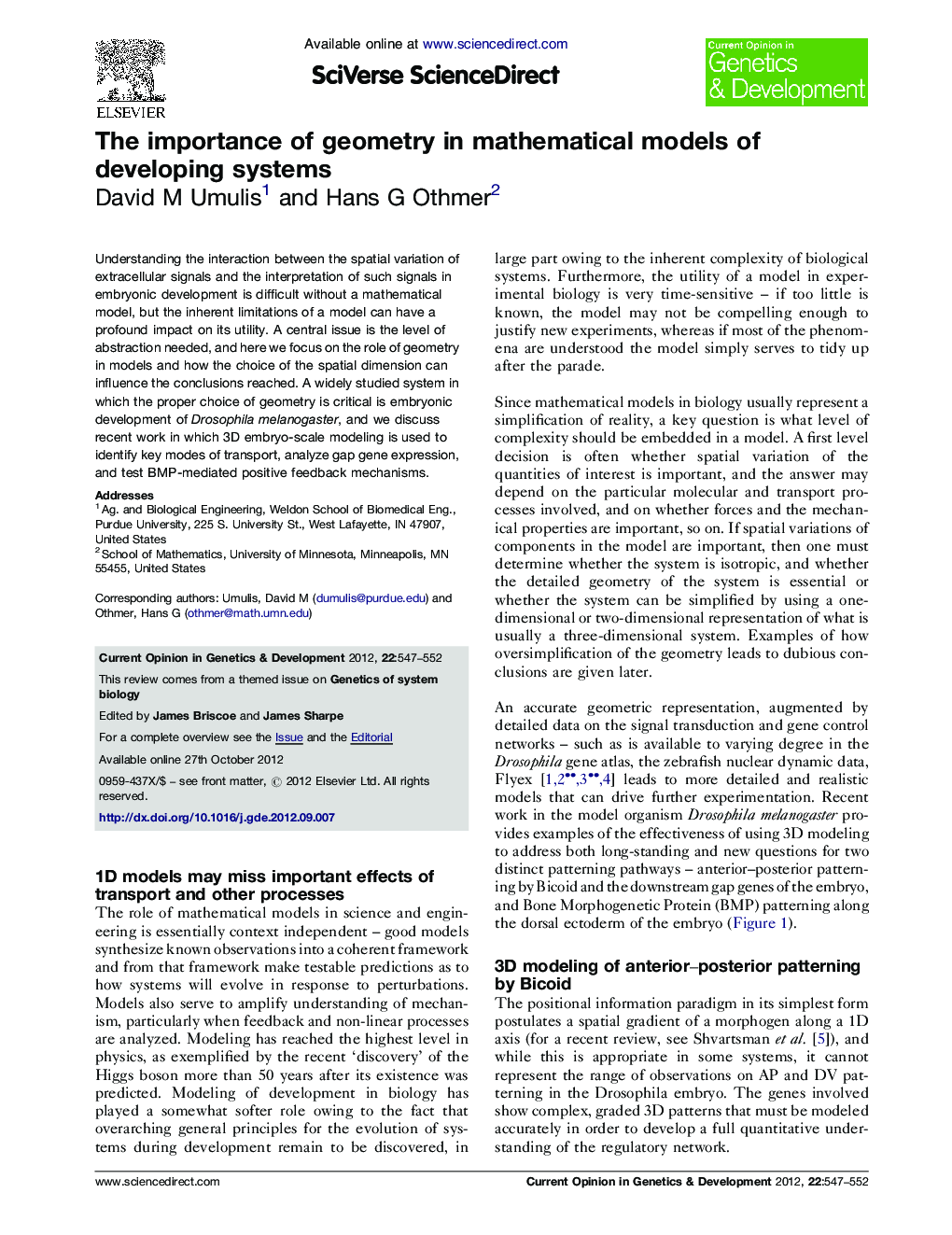| کد مقاله | کد نشریه | سال انتشار | مقاله انگلیسی | نسخه تمام متن |
|---|---|---|---|---|
| 5893268 | 1153900 | 2012 | 6 صفحه PDF | دانلود رایگان |

Understanding the interaction between the spatial variation of extracellular signals and the interpretation of such signals in embryonic development is difficult without a mathematical model, but the inherent limitations of a model can have a profound impact on its utility. A central issue is the level of abstraction needed, and here we focus on the role of geometry in models and how the choice of the spatial dimension can influence the conclusions reached. A widely studied system in which the proper choice of geometry is critical is embryonic development of Drosophila melanogaster, and we discuss recent work in which 3D embryo-scale modeling is used to identify key modes of transport, analyze gap gene expression, and test BMP-mediated positive feedback mechanisms.
Journal: Current Opinion in Genetics & Development - Volume 22, Issue 6, December 2012, Pages 547-552